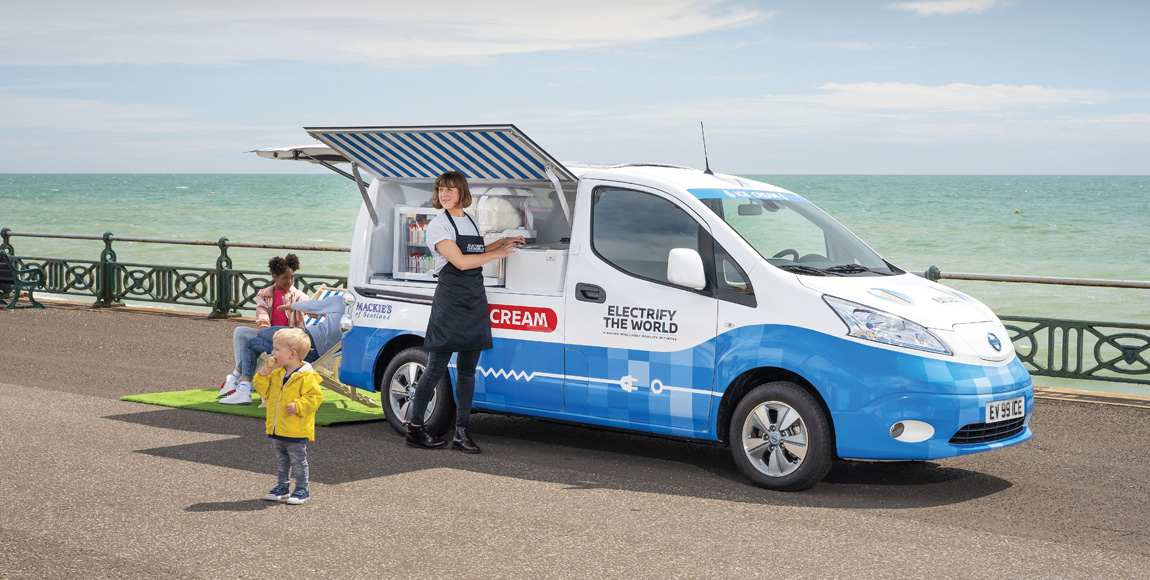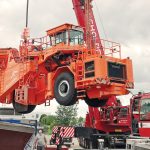No ICE in this ice-cream van

Picture an ice-cream van. Its diesel engine is running, while excited kids gather around. While the van thrills those kids with delight, it has the opposite effect on environmentalists … because of all those emissions going into our atmosphere.
Enter a prototype van based on the e-NV200, Nissan’s 100-percent electric light commercial vehicle. It’s an ice-cream van sans an internal combustion engine (ICE)!
Instead of a jingle to attract customers – not always popular with parents – the concept has a smart button that generates a tweet of the van’s precise location using the global addressing service What3Words.
What3Words divides the world into three-square-metre locations, each with a unique three-word address. For instance, trendy.angel.define is a spot on Brighton & Hove’s seafront in the United Kingdom (UK). Customers can easily find the van in a park or seafront location where normal street addressing would not apply.
The van was created to celebrate the recent Clean Air Day in the UK. It was produced in conjunction with Mackie’s of Scotland, an ice-cream producer that powers its family owned dairy farm by renewable wind and solar energy.
“Ice cream is enjoyed the world over, but consumers are increasingly mindful of the environmental impact of how we produce such treats, and the ‘last mile’ of how they reach us,” says Kalyana Sivagnanam, managing director of Nissan Motor (Great Britain).
Most ice-cream vans – particularly older models – have diesel engines, which are kept running to operate the refrigeration equipment. These motors are criticised for producing harmful emissions, including black carbon, when left idling. Some UK towns and cities are now looking to ban or fine these vehicles.

While the van’s motor is driven by a 40 kWh battery, the on-board ice-cream equipment, including a soft-serve machine, freezer drawer and drinks fridge, are powered by the newly unveiled Nissan Energy ROAM, which goes on sale later in 2019.
Designed for both professional and leisure applications, ROAM is a portable power pack that uses lithium-ion cells recovered from early first-generation Nissan electric vehicles (produced from 2010 onwards). This provides a sustainable second life for Nissan EV batteries.
The e-NV200 has an all-electric driving range of up to 200 km between charges. The two Nissan Energy ROAM units have a combined storage capacity of 1,4 kWh and can each output power at up to one kilowatt. They can be recharged either from a 230 V mains supply (a full recharge takes about an hour), or the solar panel array on the van’s roof (a full recharge takes two to four hours).
Thanks to the e-NV200’s bi-directional charging capability, owners could even earn income through the winter – when the van is less frequently used. Through a V2G (vehicle-to-grid) charger, the e-NV200’s battery can be used to store surplus energy from the national grid (for example renewable wind and solar energy), and then provide it back to the grid when needed. This technology can help balance out the peaks in national energy demands, as well as providing electric vehicle owners with additional revenue from their vehicle when it’s not being driven.
“We’re delighted to have worked with Nissan on this project as it’s the perfect complement to our own vision of becoming self-sustainable in terms of renewable energy,” Karin Hayhow, marketing director at Mackie’s of Scotland, tells FOCUS.
“At Mackie’s we’ve already shifted our dependence from fossil-fuels to clean renewable power. We now export 4,5 times more energy to the national grid than we consume. This year we will make further progress towards our vision with the installation of an innovative new low-carbon refrigeration system. We’re proud to be a ‘climate positive’ ice cream maker,” she says.
Published by
Charleen Clarke
focusmagsa



